Il valore del borgo: Sewing a small town per la rinascita di Bussolino e Bardassano
Abstract
La terza edizione della scuola estiva internazionale di architettura Sewing a small town. Hilltowns and culture of landscape, svoltasi a Gassino Torinese dal 17 al 29 luglio 2017, ha coinvolto tredici giovani partecipanti (architetti e studenti di architettura) provenienti da quattro Paesi (Argentina, Italia, Romania e Polonia) ed ha avuto come obiettivo l’individuazione di soluzioni progettuali funzionali alla valorizzazione delle due frazioni del Comune di Gassino Torinese, ovvero Bussolino e Bardassano. La riqualificazione e il riutilizzo di alcuni edifici esistenti, la realizzazione di nuove strutture ricettive e l’integrazione fra il tessuto costruito e il sistema dei vuoti hanno rappresentato i principali temi di progetto attraverso i quali i partecipanti della scuola estiva hanno esplorato diverse possibilità di intervento consapevole attraverso l’applicazione di un’architettura contemporanea e sostenibile e giungendo alla definizione di proposte progettuali tanto efficaci ed innovative quanto in linea con la tradizione costruttiva locale per il rilancio turistico delle due località. Il presente contributo intende mettere in luce gli esiti di Sewing a small town, una scuola estiva intesa fin dalla sua prima edizione come un vero e proprio laboratorio di produzione di idee e scenari, utile per riflettere sui temi del ridisegno di piccoli centri urbani collinari, con l’obiettivo di stimolare una serie di riflessioni relative alle problematiche legate al progressivo abbandono dei centri storici.
The Value of the Hilltown: Sewing a Small town for the Renaissance of Bussolino and Bardassano
The third edition of the architecture summer school Sewing a small town. Hilltowns and culture of landscape took place in Gassino Torinese from July 17 to 29, 2017, involved thirteen young participants (architects, and students of architecture) from four Countries (Argentina, Italy, Romania and Poland) and aimed to identify effective design solutions for the enhancement of the two villages of the Municipality of Gassino Torinese, Bussolino and Bardassano. The reuse and the renovation of existing buildings, the creation of new receptive structures and the integration of the urban fabric with the system of empty spaces represented some of the project themes through which the summer school participants explored different possibilities for conscious intervention through the application of contemporary and sustainable architecture and reaching the definition of project proposals as effective and innovative as in line with the local constructive tradition for the touristic enhancement of the two villages. This contribution aims to highlight the results of Sewing a small town, a summer school intended since its first edition as a real laboratory for the production of ideas and scenarios, useful for reflecting on the issues of redesigning small urban hilltowns, with the aim of stimulating a series of reflections on issues related to the progressive abandonment of historic centers.
Parole chiave
Full Text
PDFDOI: https://doi.org/10.14633/AHR283
Refback
- Non ci sono refbacks, per ora.
Copyright (c) 2020 Cinzia Gavello

This work is licensed under a Creative Commons Attribution-NonCommercial 4.0 International License.
........................................................................................................................................................................................................................................................................................................................................................
ArcHistoR è una rivista open access e peer reviewed (double blind), di Storia dell’architettura e Restauro, pubblicata dall’Università Mediterranea di Reggio Calabria. La rivista ha cadenza semestrale. È una rivista di Classe A (ANVUR) per l’Area 08 - Ingegneria civile ed Architettura, settori C1, D1, E1, E2, F1.
Comitato scientifico internazionale
Maria Dolores Antigüedad del Castillo-Olivares (Universidad Nacional de Educación a Distancia de España), Monica Butzek (Kunsthistorisches Institut in Florenz), Jean-François Cabestan (Université Paris 1 - Panthéon Sorbonne), Alicia Cámara Muñoz (Universidad Nacional de Educación a Distancia de España), David Friedman (Massachussets Institute of Technology), Alexandre Gady (Université Paris-IV-Sorbonne), Jörg Garms (Universität Wien), Miles Glenndinning (Scottish Centre for Conservation Studies, University of Edinburgh), Mark Wilson Jones (University of Bath), Loughlin Kealy (University College Dublin), Paulo Lourenço (Department of Civil Engineering, University of Minho), David Marshall (University of Melbourne), Werner Oechslin (ETH, Zurich, Stiftung Bibliothek Werner Oechslin, Einsiedeln), José Luis Sancho (Dirección de Conservación de Bienes Histórico-Artísticos, Palacio Real, Madrid), Dmitrij O. Švidkovskij (Moscow Architectural Institute, MARCHI)
Comitato direttivo
Tommaso Manfredi (direttore responsabile), Giuseppina Scamardì (direttore editoriale), Antonello Alici, Salvatore Di Liello, Fabrizio Di Marco, Paolo Faccio, Mariacristina Giambruno, Bruno Mussari, Annunziata Maria Oteri, Francesca Passalacqua, Edoardo Piccoli, Renata Prescia, Nino Sulfaro, Fabio Todesco, Guglielmo Villa
........................................................................................................................................................................................................................................................................................................................................................
Laboratorio CROSS. Storia dell'architettura e Restauro

ISSN 2384-8898

This work is licensed under a Creative Commons Attribution-NonCommercial 2.0 Generic License.

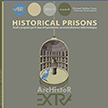
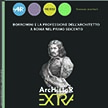
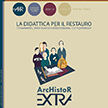

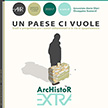
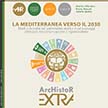
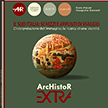
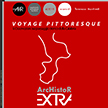
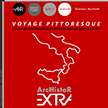
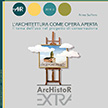
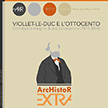

_2.jpg)



